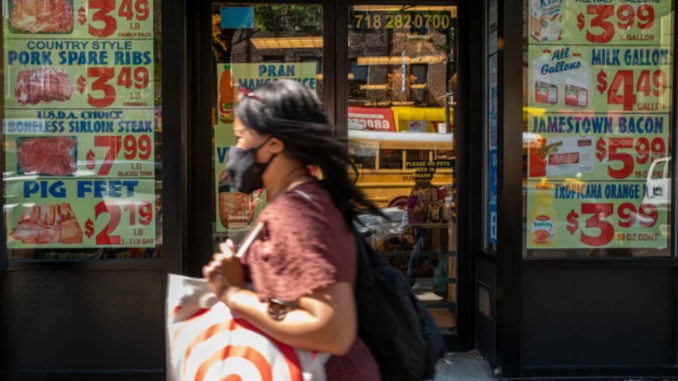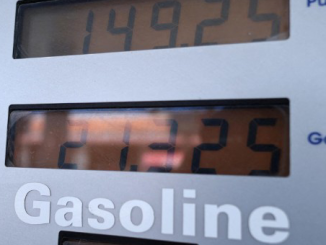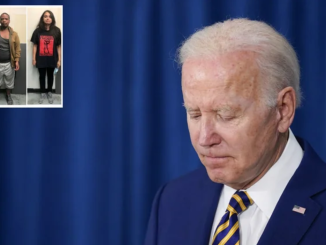
Inflation surged an unexpectedly strong 9.1% last month, raising the risk of even steeper rate hikes from the Federal Reserve as Americans get pummeled by record gas prices, soaring rents and stiff grocery bills.
The dismal June reading released by the Labor Department on Wednesday — the highest since November 1981 — will ratchet up pressure on President Biden, who has faced widespread criticism over his muted initial response to inflation as higher prices slammed household budgets.
The data also stoked speculation about stiffer rate increases from the Fed, which hiked its benchmark interest rate by three-quarters of a percentage point for the first time since 1994 after a higher-than-expected inflation reading in June.
Investors are currently betting on another three-quarter percentage point hike later this month, with a one-in-three chance of a full-point hike, according to Bloomberg.
On a monthly basis, the Consumer Price Index, a closely watched inflation gauge that measures what consumers paid for goods and services, rose 1.3% from May to June.
The core CPI, or the price of goods excluding volatile food and energy costs, was 5.9% on an annualized basis.
The Federal Reserve is under pressure to respond to inflation without triggering a recession.
June’s numbers were even higher than expected as initial policy efforts meant to curtail prices fail to make an impact. Economists had expected an 8.8% increase for the month, according to Dow Jones data. Economists had expected the core CPI to increase 5.7%.
Energy prices have surged 41.6% since the same month last year, marking the steepest annual increase since April 1980. The food index also increased at a decades-high clip of 10.4%.
Rent prices, another key input for inflation, jumped 0.8% from May to June – the largest monthly increase since April 1986.
The White House warned that gas prices would push the CPI’s headline number to high levels in June.
Markets have fallen into bear territory in recent weeks – a sign that investors are skeptical of Fed Chair Jerome Powell’s ability to successfully combat inflation through rate hikes without tipping the US economy into a recession.
“Across the economy, consumers, business leaders, investors and regulators are all asking the same question: When will inflation peak?” Bankrate senior economic analyst Mark Hamrick said. “Central bankers were caught flatfooted and are now trying to play catch-up and recover some of their bruised credibility.”
Dow futures sank more than 400 points following the June CPI report’s release. Nasdaq futures fell more than 250 points.
Gas prices have moderated slightly since hitting an all-time high on June 14.
As The Post reported, White House officials began a campaign to spin the numbers before they were released – with top Biden economic advisers Brian Deese and Cecilia Rouse noting in a memo that the data “will largely not reflect the substantial declines in gas prices we’ve seen since the middle of June.”
White House Press Secretary Karine Jean-Pierre also warned that the “headline number” for the CPI – meaning its reading with the price of volatile food and energy prices included – was likely to be “highly elevated” due to the gas prices.
There are some signs that inflation is nearing its peak after months of increases. The national average gas price has fallen steadily in recent weeks, dropping to $4.631 per gallon on Wednesday after reaching an all-time high of $5.016 on June 14.
Higher food prices are a key driver of inflation.
Hours before the Labor Department’s June CPI report was published, a widely circulated fake report claiming inflation hit 10.2% last month sent stocks plunging to session lows.
The Bureau of Labor Statistics tweeted Tuesday afternoon that the report was fake.
“We’re aware of a fake CPI release image circulating on Twitter. It is a fake. Stay tuned for the real CPI release tomorrow at 8:30 AM ET,” the department said.
* Article from: The New York Post


